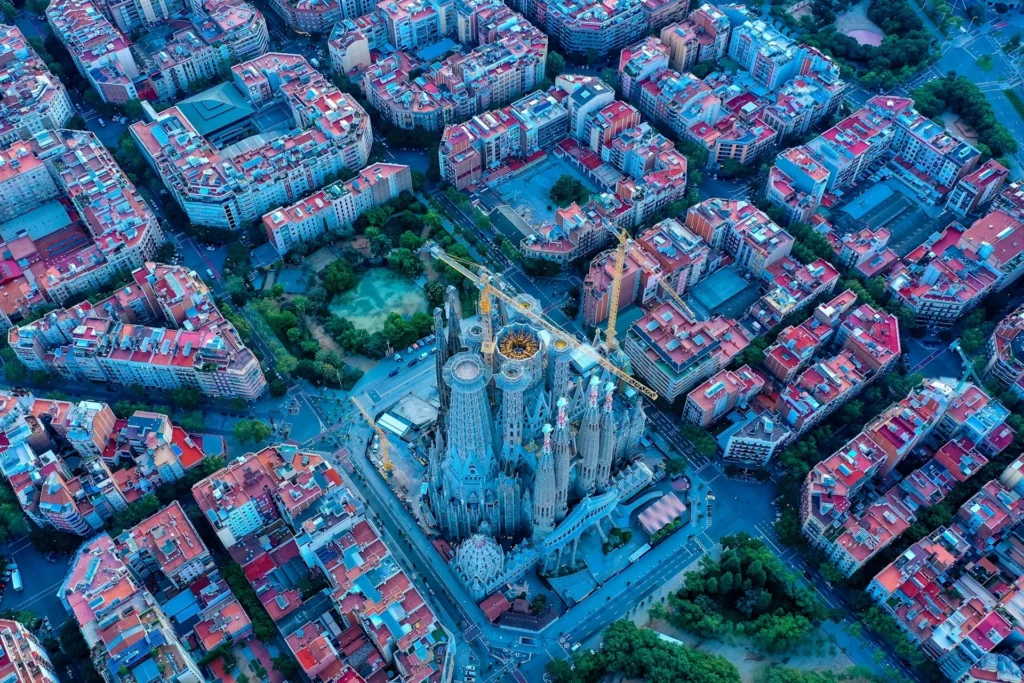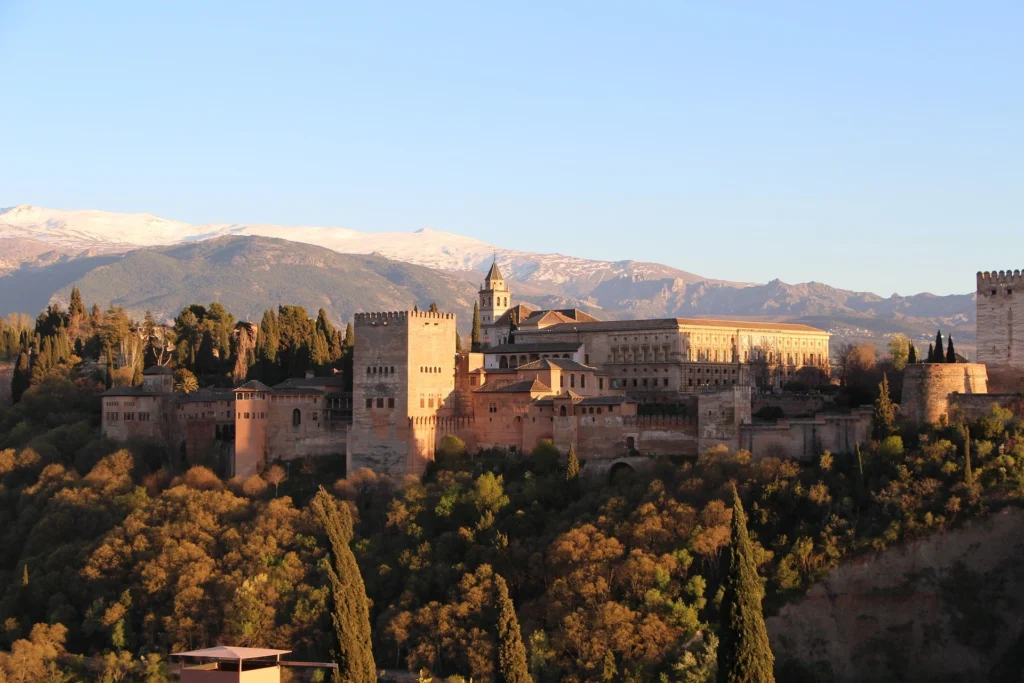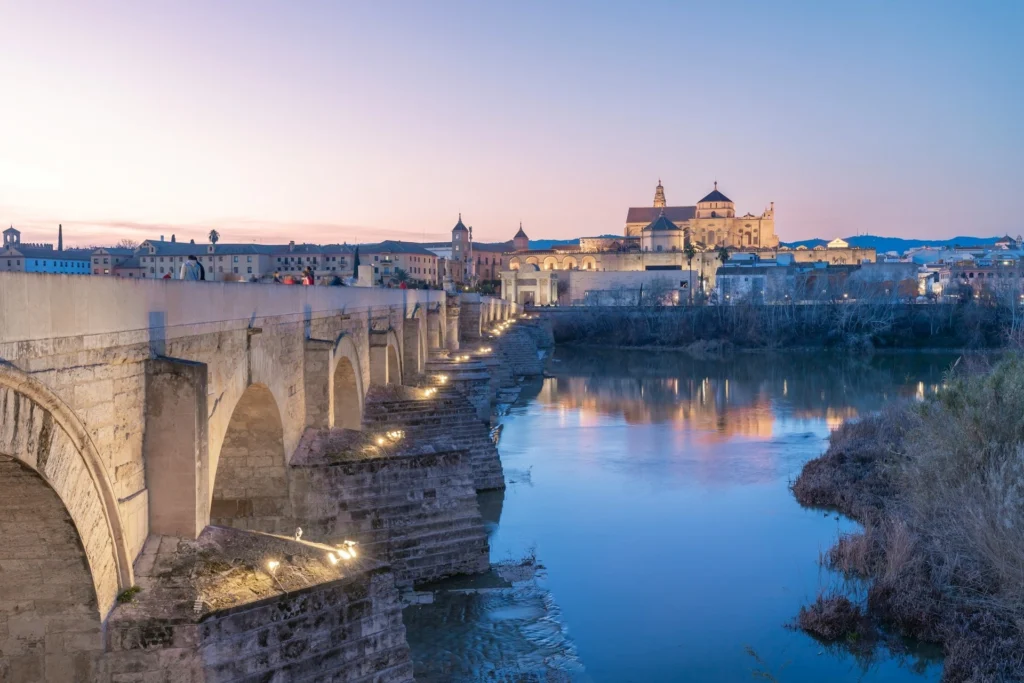
El Escorial
Ready to explore the historic El Escorial near Madrid? Find the best tickets, insider tips, and all the info you need to plan your visit.
Buy official tickets El Escorial
Sells out fast | Free cancellation
Just an hour from Madrid, El Escorial is a breathtaking mix of royal palace, monastery, and cultural treasure. It’s the perfect day trip for anyone curious about Spanish history, stunning architecture, and peaceful gardens—all set against the dramatic backdrop of the Sierra de Guadarrama mountains.
The History of El Escorial
Just an hour from bustling Madrid lies one of Spain’s most fascinating monuments: El Escorial. Officially known as the Royal Monastery of San Lorenzo de El Escorial, this monumental complex is not only an architectural masterpiece but also a place where Spanish history comes vividly to life. El Escorial dates back to the mid-16th century, when King Philip II decided to build a monument in honor of his father, Emperor Charles V, and to commemorate the victory over the French at the Battle of Saint-Quentin. With this project, Philip II sought not only to demonstrate his religious devotion but also to highlight the power and grandeur of the Spanish monarchy.
Construction began in 1563 under the direction of Italian architect Juan Bautista de Toledo, who had previously worked on St. Peter’s Basilica in Rome. After his death, Juan de Herrera took over and left a lasting mark on the final design. Construction lasted over twenty years and was completed in 1584. El Escorial soon became the spiritual and political center of the Spanish Empire—a place where kings resided, ruled, and were eventually laid to rest.
Architecture and Layout
El Escorial exemplifies the austere and monumental Herrerian architectural style. Built from gray granite quarried from nearby mountains, the complex has a rectangular floor plan that resembles a giant grill—an allusion to the martyrdom of Saint Lawrence, who was said to have been burned on a gridiron. The square structure is reinforced by four imposing corner towers, giving the whole a fortress-like appearance.
The complex consists of several parts, each with a distinct function. At its core lies the monastery, still in use by monks and serving as the heart of El Escorial. Adjoining the monastery is the royal palace, once home to Spanish kings and furnished with elegant but modest rooms. Dominating the central area, the basilica stands out with its grand dome and richly adorned altar. Beneath the basilica lies the famous Pantheon—the royal crypt where nearly all Spanish monarchs since Charles I are buried. The library of El Escorial is one of the most beautiful and significant in Europe, containing thousands of rare manuscripts and books, with a ceiling adorned with allegorical frescoes.
The gardens and courtyards of El Escorial are meticulously landscaped, offering a tranquil retreat. One of the most beautiful courtyards, the Patio de los Evangelistas, is surrounded by cloisters and decorated with statues and fountains. Here, you can feel the serene atmosphere that defines the entire complex.
Art and Culture in El Escorial
El Escorial is not only an architectural gem but also a treasure trove of art and culture. Over the centuries, countless artworks have been collected, including paintings by great masters like El Greco, Velázquez, Titian, and Luca Giordano. The basilica and cloisters are adorned with frescoes depicting biblical scenes and saints. In the royal chambers, portraits of Spanish royalty and their families offer a unique glimpse into courtly life.
The library is one of the absolute highlights of El Escorial. It holds thousands of manuscripts and incunabula, including works from antiquity, medieval texts, and Renaissance scientific treatises. Its ceiling is a masterpiece in itself, illustrating the seven liberal arts: grammar, rhetoric, logic, music, geometry, arithmetic, and astronomy. The library exudes intellectual curiosity and reflects El Escorial’s role as a center of learning and science.
The gardens and courtyards also abound with artistic detail. Sculptures, fountains, and flower beds make every walk through the complex an experience. The Patio de los Evangelistas is especially renowned for its harmony and symbolism: its cross-shaped design symbolizes paradise, while the small temple in the center represents spiritual life.
Buy official tickets El Escorial
Sells out fast | Free cancellation
Practical Information for Visitors
A visit to El Escorial is an unforgettable experience and a must if you’re in Madrid or central Spain. The complex is open year-round, except on Mondays. In summer, it’s open from 10:00 AM to 8:00 PM, while in winter it closes at 6:00 PM. Booking tickets online in advance is recommended to avoid lines at the entrance.
El Escorial is easily accessible by public transport. Buses and trains run regularly from Madrid to San Lorenzo de El Escorial. The bus takes about 45 minutes, and the train a bit longer. From the station, it’s a short walk to the complex. If you’re driving, there are parking spaces, though they can fill up quickly in high season.
Guided tours are highly recommended. A knowledgeable guide will enrich your visit with historical, architectural, and artistic insights. Audio guides are also available in several languages, including Dutch and English.
The Village of San Lorenzo de El Escorial
San Lorenzo de El Escorial is a charming village nestled in the shadow of the monumental complex. It emerged in the 16th century as workers, craftsmen, and courtiers settled there during the monastery’s construction. Today, it’s a lively town with cozy squares, narrow streets, and a relaxed atmosphere. You’ll find many shops, cafés, and restaurants offering local specialties.
The village’s central square, Plaza de la Constitución, is its beating heart. It’s a great spot to relax on a terrace with views of the monastery and surrounding mountains. In summer, markets and festivals frequently bring locals and tourists together for music, dance, and good food.
Beyond the monastery, San Lorenzo offers other attractions. The Casita del Infante, a refined summer retreat built for the son of King Charles III, is surrounded by beautiful gardens and boasts scenic views. The Real Coliseo de Carlos III, one of Spain’s oldest still-operational theaters, hosts a diverse program of music, theater, and dance.
Nature and Hiking Around El Escorial
El Escorial lies at the foot of the Sierra de Guadarrama, a mountain range known for its pristine nature and spectacular views. The region is ideal for hiking, cycling, and nature activities. Several trails lead from the village through forests, mountain paths, and along streams. One popular hike ascends Mount Abantos, from where you can enjoy breathtaking views of El Escorial, the village, and the Castilian plains.
In addition to hiking, the area is perfect for mountain biking, horseback riding, and bird watching. In autumn, the forests turn brilliant shades of red and gold, while spring brings blooming wildflowers and a vibrant landscape. The combination of culture and nature makes El Escorial an ideal destination for a day trip or longer stay.
Buy official tickets El Escorial
Sells out fast | Free cancellation
Tips for a Great Visit
To get the most out of your visit, it’s best to arrive early in the day to avoid crowds and explore at your own pace. Wear comfortable shoes, as the grounds are large with many stairs and steep paths. Take your time not just for the main sights, but also to enjoy the quiet courtyards and gardens, where you can escape the bustle and soak in the tranquility.
You can easily combine your visit to El Escorial with other regional highlights. The Valley of the Fallen, a powerful monument commemorating the victims of the Spanish Civil War, is only a few kilometers away. The historic cities of Toledo and Segovia are also within reach and rich in culture and history.
Dining and Accommodations
In San Lorenzo de El Escorial and nearby villages, you’ll find a wide range of restaurants, cafés, and tapas bars. The local cuisine is hearty and flavorful, with dishes like cochinillo (suckling pig), cordero asado (roast lamb), and judiones (white bean stew). Tapas are also plentiful, and a glass of local wine or refreshing sangria makes for a perfect meal.
Accommodations in the area are plentiful and varied. From simple hostels to luxurious hotels with monastery views, there’s something for every budget. Nature lovers may opt for a rural hotel or holiday home in the surrounding Sierra de Guadarrama.
El Escorial as UNESCO World Heritage
In 1984, El Escorial was designated a UNESCO World Heritage Site in recognition of its unique blend of architecture, art, and history. It is considered the most important monument of the Spanish Renaissance and a symbol of Spain’s Golden Age. Its influence extended beyond Spain, inspiring architects and artists across Europe with its austere yet monumental style and harmonious layout.
As a World Heritage Site, El Escorial is protected and maintained for future generations. Restoration and conservation projects ensure the complex remains in excellent condition and accessible to visitors worldwide. A visit to El Escorial is not just a journey through Spanish history, but also an encounter with global cultural heritage.
Buy official tickets El Escorial
Sells out fast | Free cancellation
Why El Escorial Should Be on Your Itinerary
El Escorial is far more than just a monastery or palace. It is a place where Spanish history comes alive, where art and architecture merge, and where you can feel the grandeur of Habsburg Spain. Whether you’re interested in culture, history, nature, or gastronomy, El Escorial has something for everyone. Visiting this monument is a journey through time and an introduction to the heart of Spanish heritage.
Its serene atmosphere, stunning artworks, and impressive architecture make El Escorial a destination you won’t soon forget. Whether you’re taking a day trip from Madrid or staying longer in the area, El Escorial will inspire and amaze you. It’s a place that invites reflection, admiration, and discovery—offering a deeper insight into the soul of Spain.
How do you get to El Escorial from the center of Madrid?
A visit to El Escorial often starts at Madrid Atocha or Chamartín station. From there, you can take the Cercanías train (line C3a) towards San Lorenzo de El Escorial. The journey takes about an hour. From the train station, it is a 15- to 20-minute walk to the entrance of the monumental complex. Guided tours to El Escorial are also available from Madrid.
Is El Escorial open all year round?
Those who wish to visit El Escorial do not have to limit themselves to the summer months. The monument is open almost all year round.
Is it best to book tickets online or buy them on site?
It is advisable to make a reservation online in advance to avoid disappointment. Waiting times can be quite long, especially on weekends and during holiday periods. Online tickets are not only convenient, but often also give you access to all the main parts of the complex without having to queue.
What is there to do in the vicinity of El Escorial?
There are several interesting excursions around El Escorial. For example, the Valle de los Caídos, an impressive monument with a turbulent history, is a short distance away. The village of San Lorenzo de El Escorial also offers cozy cafés, historic squares, and a slower pace for those who want to reminisce about their visit.
Is El Escorial interesting for children and families?
Although the complex has a serious appearance, it is also easily accessible for families with children. The gardens, wide staircases, and impressive halls arouse the curiosity of younger visitors. Interactive audio guides allow you to actively involve children in what they see, making the visit both educational and fun for them.
Is there a dress code for El Escorial?
Because El Escorial is located at a higher altitude, the temperature and wind can differ from those in Madrid. Wear comfortable shoes for the stone floors and stairs, and bring plenty of water—especially in the warmer months. A light jacket or cardigan is not a luxury, even in sunny weather. There is no formal dress code.
Buy official tickets El Escorial
Sells out fast | Free cancellation
Curious to discover more about Madrid? | Head over to our main page about this city.


